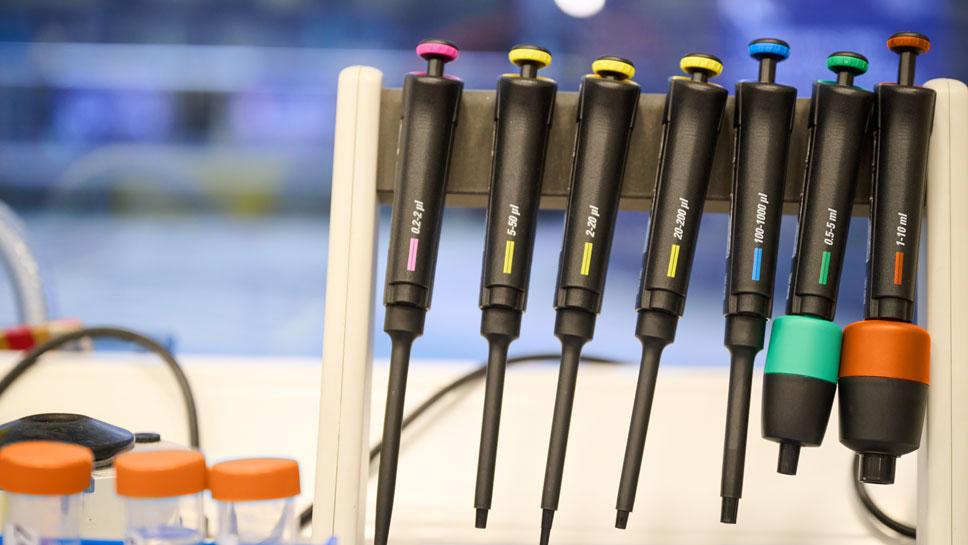New research carried out by MDUK-funded researchers has identified a new cause of muscle weakening in spinal muscular atrophy during early muscle development. Dr Melissa Bowerman’s team, including her PhD student Emma Sutton, at the University of Keele, Staffordshire, have been investigating the mechanisms that drive skeletal muscle wasting. Their findings could eventually enhance existing treatments for spinal muscular atrophy and similar conditions.
Research reveals new cause of muscle weakening in spinal muscular atrophy

What is spinal muscular atrophy?
Spinal muscular atrophy (SMA) is a rare muscle-wasting condition caused by genetic changes that reduce the levels of a protein in motor neurons (the nerves that connect the spinal cord to the muscle). The protein is called survival motor neuron (SMN). SMA is characterised by the loss of motor neurons, leading to weakness in the skeletal muscles (muscles that help us move, eat, breathe and more).
Symptoms of SMA vary widely depending on the type and severity of the condition, but generally include muscle weakness, involuntary muscle contractions, breathing difficulties and scoliosis. SMA is usually diagnosed in infants, with one in every 10,000 babies worldwide born with some type of SMA.
Currently in the UK, there are three treatments available for people living with SMA – Spinraza (nusinersen), Zolgensma (onasemnogene abeparvovec) and Risdiplan (evrysdi).
Why was it important to carry out the research?
Even though there are treatments available for SMA, some people will still experience muscle weakness. For scientists and clinicians to develop fully effective therapies for SMA and other muscle-wasting conditions, advancing our understanding of the processes causing muscle wasting is essential.
A group of researchers, led by Professor Melissa Bowerman and partly funded by Muscular Dystrophy UK, were interested in exactly this – identifying the key factors that induce wasting of the skeletal muscles in SMA, and how they function.
What could be causing muscle wasting in SMA?
A molecular pathway (a series of biological and chemical reactions that control biological processes and can affect how our bodies work) that has been linked to muscle wasting is called TWEAK/Fn14. Yet, despite having a clear role in regulating muscle health, the involvement of TWEAK/Fn14 in SMA and early muscle development is yet to be understood.
What did they find out?
Researchers often use mice to study various human conditions as they share many biological similarities to humans, including genetics, physiology and drug response. To explore what TWEAK/Fn14 does in SMA, researchers used two mouse models of SMA and monitored the changes during early muscle development.
They found that TWEAK/Fn14 is less active during SMA progression. This contrasts with previous studies, which report increased TWEAK/Fn14 activity in wasting adult muscles. This suggests TWEAK/Fn14 is responsible for different things in the skeletal muscle during development and in adulthood, painting a more complicated picture of the pathology driving muscle-wasting than previously described.
The scientists were also able to show that TWEAK/Fn14 and SMN likely work together in SMA mouse models. Targeting these proteins may hold therapeutic value. On this note, SMA muscle symptoms were improved using a molecule that boosts TWEAK activity in young SMA mice, suggesting that restoring TWEAK/Fn14 signalling in SMA muscle might be therapeutically beneficial.
Future directions
These results showcase the complex mechanisms that drive muscle wasting in SMA and have opened exciting new avenues to find additional treatments for SMA. And while there are several treatments available for SMA, these findings could eventually lead to effective combination therapies to increase muscle strength in people living with SMA.
This research represents a major step towards finding these therapies, which can improve the lives of those affected by this condition.
‘What’s new in research’ is our monthly blog series featuring recent advancements in research into muscle-wasting conditions. Each month, we choose a research article that will be summarised for you by our research communications volunteers, all of whom have backgrounds in various fields of research.
This piece was written by Bethany Evans. Beth is a Gene Therapy Technician at King’s College London. In this capacity, Beth is working on a gene therapy project focused treating fronto-temporal dementia and amyotrophic lateral sclerosis (ALS). Beth got involved in writing for MDUK because she thoroughly enjoys scientific research, in particular research that can be translated into therapies, and would like to communicate these exciting updates to the general public.


